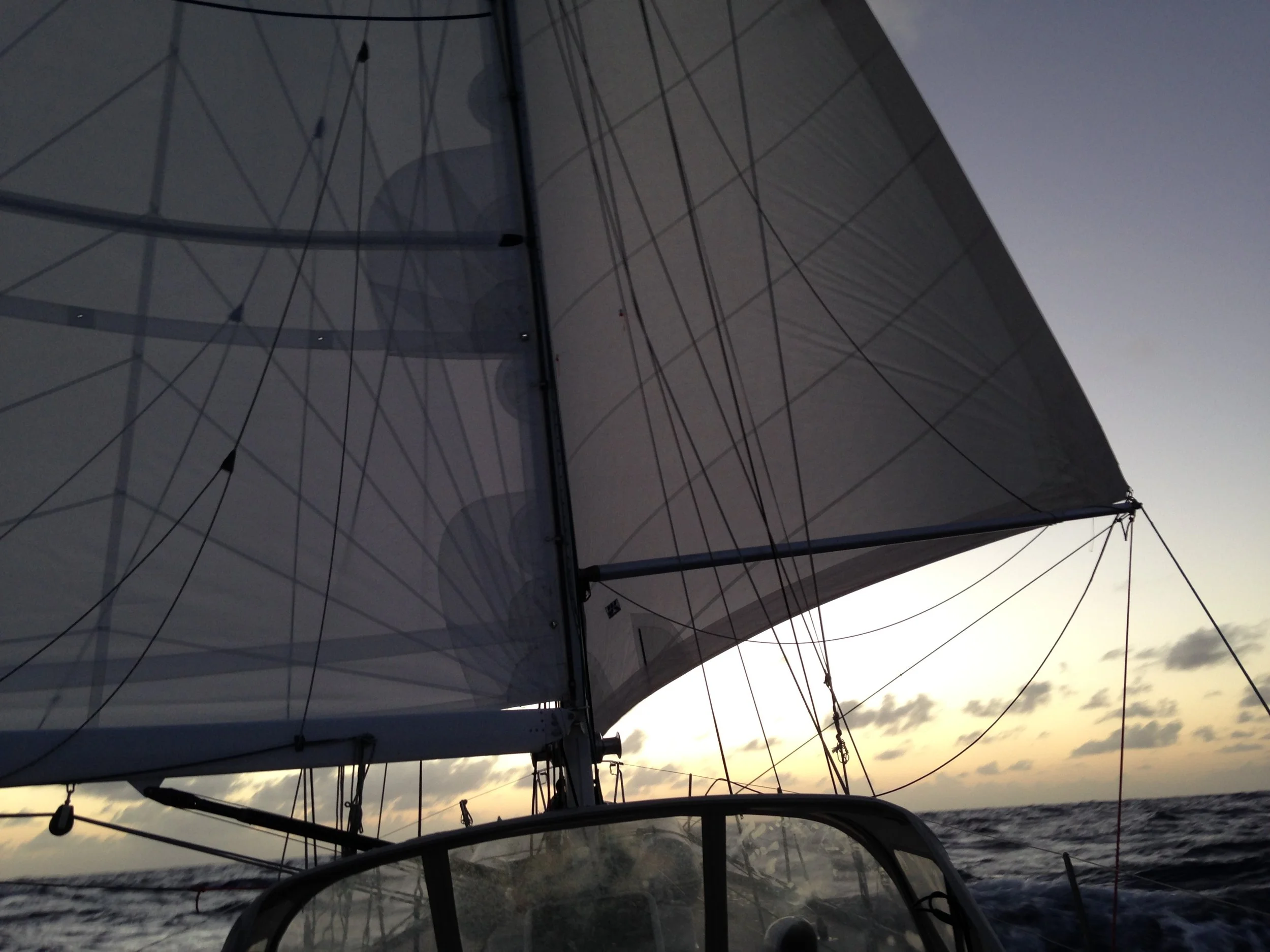8 May, 1600
Isbjorn is running wing on wing on the starboard tack, the genoa poled out to catch the SE'ly breeze. The wind is steady and she's making 5-6 knots, but the sea is confused and the sails slat hard in the worst rolls. There's a NW'ly swell rolling in from our left, opposing the wind-driven SE'ly swell and corkscrewing the boat around at times.
The sky off of our port quarter is a fearful shade of grey, and there's rain in the clouds behind us. Up to now, all the weather has come from the E, as it does in the Trades. But we're sailing out of that zone now and need to remember that the continental weather will come from the west, our left.
1630
A half hour goes by and those dark clouds are DEFINITELY moving from west to east. Time for action. We quickly stow the pole and set Isbjorn on a starboard tack, broad reach, away from the approaching squall line that by now has an ugly ragged edge. It's the leading edge of the all but stationary cold front we've been anticipating. This far south it's not strong, and basically dissipating above our heads, but it's still got some life left for us.
Mia rolls two reefs in the genoa while Thane and I take one reef in the main. Isbjorn slows under too little canvas, but we're snug down now for whatever this little front has in store.
Soon the edge is upon us and the sky opens up. Rain pounds the salt off the deck. Tom emerges from the cabin bare-chested and in his swimmers, hoping to get the shower he missed the day before (he was napping while the rest of us showered on the stern). The wind abruptly goes from SE to NW, as I'd anticipated. We jibe Isbjorn onto port and are back on course quickly, sailing due north now on a close reach. That's a 180-degree windshift in less than 20 minutes.
The front has lots of rain in it, but not too much wind. The anemometer peaks at 22 knots as the ragged edge goes overhead.
2200
The rain has stopped but it's still overcast and there's no wind to speak of. Isbjorn motorboats at five knots, moseying her way north. I sit aft in full foulies only because the cockpit is soaked all around and I'd rather not have a wet ass. The autopilot drives us through the boring hours of motoring. All sails are down to save on the wear and tear of them slatting around in the leftover swell that rolls us some 20 degrees from side to side. Sleeping below is tough as it's hard to stabilize your head from rolling with the swell!
9 May, 1200
The sun is back! And with it a cool, dry breeze we haven't felt in months in the Caribbean. Relief! Lots of clouds of all different types lay scattered around the horizon, with intermittent patches of blue sky. Sun beams pierce a layer of dark clouds to the east, casting a heavenly glow on the ocean.
It's been a full 24 hours since we had a sextant sight. At high noon, perched on the transom, I manage to measure the sun's altitude as it hovers to the south at 80 degrees, 53 minutes. Applying a few minor corrections for the diameter of the sun's disc and the refraction of the atmosphere, and subtracting the sun's declination from the complement to my sextant reading puts our noon latitude at 26 degrees, 26 minutes north. Our earlier morning sight, advanced forward, puts us just east of the rhumb line.
Navigating purely on celestial is having a transformative effect on me. I realize at once how unimportant it is to stare at the chart all day. It hardly matters. Sail for a few days, check the position, and adjust accordingly. It's a fun challenge and great mental exercise. While Mia is keeping a GPS log in case of emergency, we haven't checked our nav against it, so our faith lies fully in the sextant and the stars.


